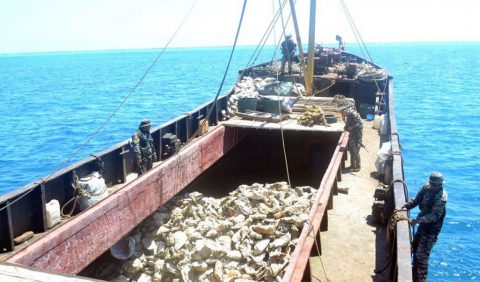
(Eagle News)—-Chinese clam harvesting fleets have returned to the South China Sea in force over the last six months after a drop-off in activity from 2016 to late 2018, a think-tank said.
According to the Asia Maritime Transparency Initiative, the fleets, which “typically include dozens of small fishing vessels accompanied by a handful of larger ‘motherships,'” have also returned to Scarborough Shoal.
“AMTI has not found clear evidence of new clam harvesting in the Spratly Islands. But on April 7, during the same period that Chinese maritime militia vessels were clustering around Philippine-occupied Loaita Island and Loita Cay, a mothership and a number of small boats were present at nearby Lankiam Cay,” AMTI said.
According to the think-tank, the mothership was about 20 meters long while those seen at Bombay Reef were typically closer to 30 meters.
The smaller boats, the AMTI said, were roughly the same dimensions.
While the absence of new scarring on Lankiam Cay after the boat’s departure would have previously indicated that no clam harvesting had taken place, AMTI said there are new methods being used to extract clams at Scarborough Shoal that make documenting the activities of these Chinese fleets more difficult.
The destruction caused by high-pressure water pumps used in deep waters, for instance, AMTI said, is “unlikely to be visible in satellite imagery” unlike the prop scarring on shallow reef surfaces.
This means, the think-tank said, that “for every clam harvesting operation that is documented in the South China Sea, others will go unnoticed.”
“But with tens of thousands of acres of reef surface already damaged or destroyed and fish stocks teetering on the brink of collapse, the effects of this wanton destruction of the marine environment will be felt across the region,” it said.








